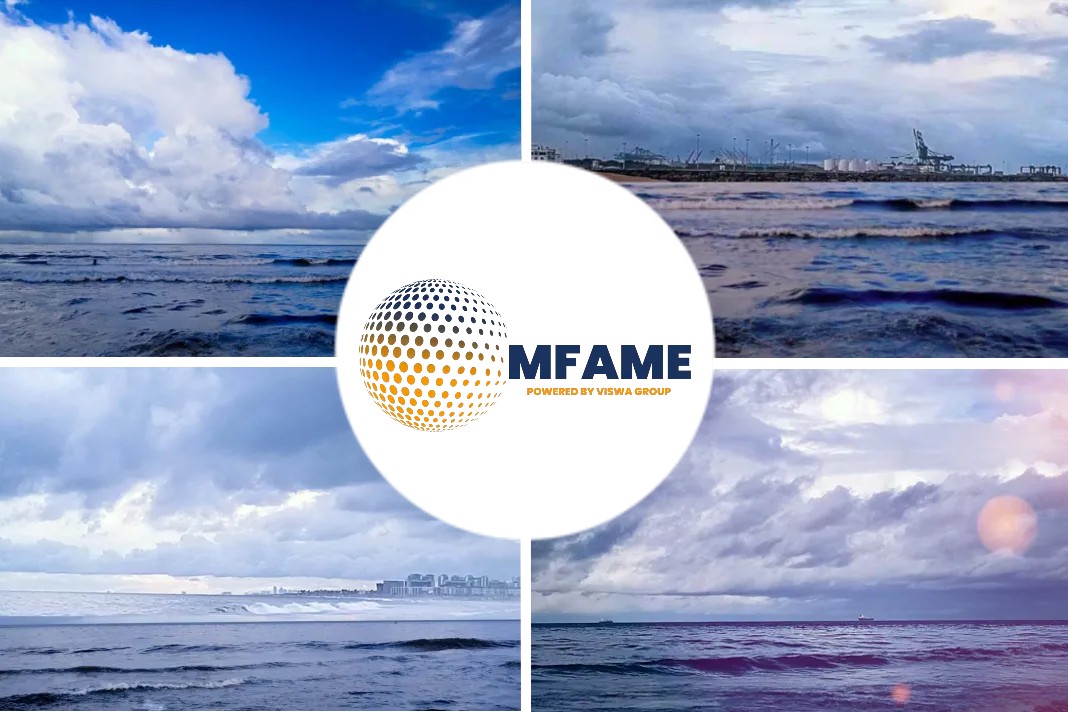Recent weeks saw a shallow-draught anchor-handling tug/supply vessel designed for operation in the challenging conditions in the Caspian delivered to Russian inland waterways operator and offshore logistics service provider Ark Shipping.
Antarctic, which was designed by Offshore Ship Designers (OSD) in close co-operation with the owner, is partly based on the design of another OSD-designed ship, Arctic, which was delivered to Ark Shipping in 2012.
The dynamic positioning class 1 vessel has a Bureau Veritas ice-class notation and is fully equipped to operate in the challenging and extreme conditions of the Caspian Sea, where ice formation of around 80 cm during winter is not exceptional. Construction of the hull from special grade steel enables Antarctic to operate in temperatures of -25–30°C. Hull construction, meanwhile, has been optimised to create a relatively low-weight hull for an ice-class 1A vessel.
Antarctic’s large breadth forms a stable platform for standby rescue, supply and anchor-handling operations under extreme conditions. The vessel can supply and load different cargoes such as cement, liquid mud, fuel oil, fresh water and black water. The minimum draught in a light operating condition of approximately 2.5 m facilitates access to the shallower parts of the Caspian Sea.
Antarctic has standby rescue vessel class notation for 100 survivors. An innovative accommodation design offers sufficient room for survivors.
The vessel, which is fully equipped with all equipment needed to ensure safe and efficient anchor-handling operations, has a total propulsion power of 4,923 kW. It has six rudders with a triple steering gear and double-cylinder setup.
Three Cummins QSK60 engines drive three high-thrust propellers, a configuration that ensures a high bollard pull and excellent manoeuvrability, even in icy and shallow waters.
Asymmetric hullform working well in Gulf of Ob
The world’s first icebreaker with an innovative asymmetric hullform has been serving as an ice management vessel at the Arctic Gates oil terminal in the Gulf of Ob on the Kara Sea in north-central Russia for two years and is doing so extremely capably, says designer Aker Arctic.
Baltika was designed to operate in the Baltic. However, after it was delivered in 2014, the vessel was taken to the Gulf of Ob for ice trials and surpassed all expectations. Gazprom Neft then chartered Baltika as an interim standby vessel for its Arctic Gates terminal, while waiting for two Aker Arctic-designed high-capacity icebreakers currently under construction at Vyborg Shipyard.
Baltika, which is extremely easy to manoeuvre, keeps the ice channel, the tanker mooring site and berths for other conventional icebreakers clear of brash ice and ice rubble. The vessel uses its vertical side to push ice away and its inclined side to smooth the frozen edge of the channel. The vessel can also flush brash ice around another vessel while remaining stationary.
To date, the vessel’s unique oblique mode has not been used for icebreaking as it is not been needed. The ice in the region is also often much thicker than Baltika was designed for, but the oblique mode of operation was, however, tested during ice trials and showed that the relatively small icebreaker can create a wide channel in the ice by breaking ice obliquely.
Aker Arctic’s development manager Alexey Shtrek visited Baltika in the Gulf of Ob earlier this year to gather feedback about the vessel. “The feedback from the crew was that no other icebreaker can perform such ice management operations quite in the way that Baltika does, even if they are more powerful,” said Mr Shtrek. “The unique asymmetrical hullform together with three azimuth Steerprop propulsion units, two in the stern and one in the bow, are a winning concept.”
Did you subscribe for our daily newsletter?
It’s Free! Click here to Subscribe!
Source: Offshore Support Journal
























